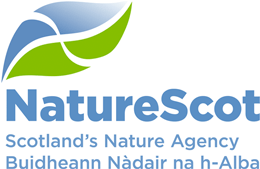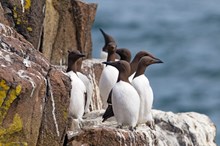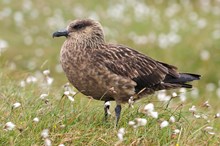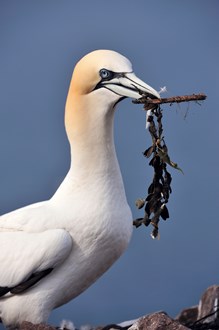15 April, 2025
Seabird numbers in Scotland continue to fall
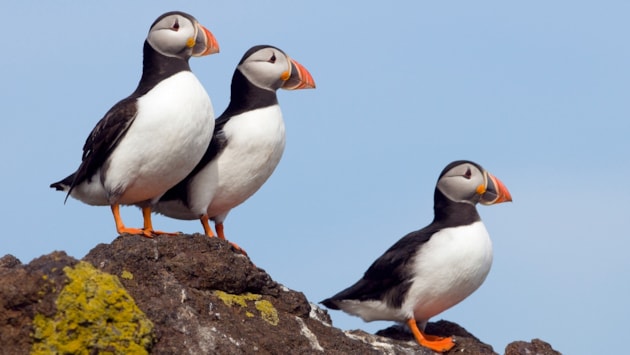
Scotland’s seabird populations continue to decline according to new statistics published today by NatureScot, although the short-term trend for some seabirds is more promising.
Overall, seabird numbers fell significantly between 1986 and 2023, with the numbers breeding around our coasts now close to half of the 1986 level, when regular monitoring first started. However, short term trends show some species appear to be stabilising, albeit still at lower levels than when monitoring began.
The latest Scottish Biodiversity Indicator for Seabirds was prepared by NatureScot using data from the UK Seabird Monitoring Programme. Twenty-four species of seabirds breed in Scotland and the indicator assesses breeding numbers for 11 species, and breeding success for 12 species.
Of the 11 species assessed for breeding numbers in 2023, all showed declines, with numbers down by 48 percent overall. Arctic skua continues to show the worst declines with numbers down 83 percent since 1986. Shortages of their food source, sandeels, is believed to be one of the main factors affecting Arctic skua, while increased predation from great skuas has also been linked to their decline.
But the short-term trend shows a more positive picture for some seabirds. Between 2013 and 2023, three species stabilised, while black-legged kittiwake, European shag and common guillemot populations increased in the sites surveyed.
The 2023 results also show that breeding success (the number of chicks produced) was around the long-term average, at 75 percent of the 1986 level. There was a mixed picture across the 12 species assessed. Four species - Arctic skua, black-legged kittiwake, European shag and little tern - had higher than average breeding success. Five species had lower than average breeding success: Atlantic puffin, common tern, guillemot, northern fulmar and northern gannet, while three species had breeding success around the average: Arctic tern, great skua and razorbill.
Simon Foster, NatureScot Trends Analyst, said:
“Scotland’s seabirds are of international importance, and they attract thousands of people to visit our coastlines each year, but they face many pressures and threats. Food availability, climate change, fisheries, predation, and invasive species are all thought to be contributing to their current declines. In recent years, avian flu has also had a considerable impact on several seabird species. Developments, such as offshore windfarms, may cause additional pressures on already declining seabird populations.
“Crucially, although they rely on the sea, they breed on land and so are relatively easy to monitor, compared with other marine life. This latest indicator shows the importance of continued long-term monitoring to help understand what is happening to our significant seabird populations so action can be taken whenever possible.”
With Scottish seabird populations under pressure from climate change, avian flu and other factors, NatureScot and the Scottish Government have put together the Scottish Seabird Conservation Action Plan, which has recently completed a public consultation.
Projects such as Biosecurity for Scotland are bringing together organisations, island communities and businesses to safeguard Scotland’s internationally important seabird islands from invasive non-native predators such as rats. With support from the Scottish Government’s Nature Restoration Fund and led by RSPB Scotland, the National Trust for Scotland, The Northern Lighthouse Board and NatureScot, Biosecurity for Scotland is developing sustainable measures and systems to reduce the ways and means by which invasive predators can get to an island. Their Predator Free Certification Scheme offers free training and accreditation to boat operators to build biosecurity into their daily operations.
Contact information
- Name
- NatureScot Media
- Telephone
- 0131 316 2655
- media@nature.scot
Notes to editors
The full report is available on our website: https://www.nature.scot/doc/scottish-biodiversity-indicator-numbers-and-breeding-success-seabirds-1986-2023
Updates are provided annually , and the data are available from the British Trust for Ornithology through the UK Seabird Monitoring Programme. The next update will be available in 2025.
The UK Seabird Monitoring Programme is a partnership of organisations that collects and collates data on breeding numbers, demographic parameters (including breeding success and survival rate), and diet from a sample of colonies around the UK.
The UK Seabirds Count, published in 2023, has improved our confidence in the trends produced. The census provides an accurate snapshot of seabird breeding numbers and allows us to benchmark the annual colony counts.
The Joint Nature Conservation Committee reports on seabird population trends as an Official Statistic. As Scotland supports the majority of UK breeding seabirds, the UK trend is heavily influenced by trends in Scotland.
NatureScot is Scotland's nature agency. We work to enhance our natural environment in Scotland and inspire everyone to care more about it. Our priority is a nature-rich future for Scotland and an effective response to the climate emergency. For more information, visit our website at www.nature.scot or follow us on X at https://x.com/NatureScot
’S e NatureScot buidheann nàdair na h-Alba. Bidh sinn a’ neartachadh àrainneachd na h-Alba agus a’ brosnachadh dhaoine gu barrachd suim a chur ann an nàdar. Tha e mar phrìomhachas againn gum bi nàdar na h-Alba beairteach agus gun dèilig sinn gu h-èifeachdach le èiginn na gnàth-shìde. Tha an tuilleadh fiosrachaidh aig www.nature.scot no air X aig https://x.com/NatureScot
